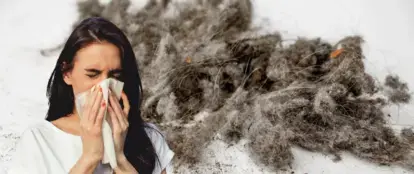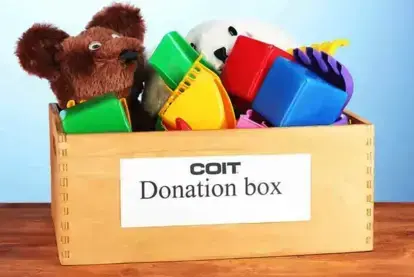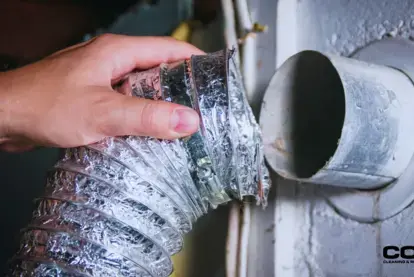
Dust—What Is It and How Does It Affect Your Home?
Contact COIT for a professional cleaning!
Dust can be found everywhere—on ceiling fans, television screens, bookshelves, countertops, desktop monitors, in between blinds, under couches, and on top of refrigerators. There’s no getting around it, dust is all around us, and while the term “dust bunny” sounds quite cute, these clumps are anything but.
Dust is the accumulation of microscopic particles that float around in the air and land on surfaces. For aesthetic reasons, dust is unsightly and makes a space look and feel filthy. Beyond its unsightliness, and perhaps more importantly, breathing in dust particles is harmful. When these particles accumulate in our living spaces, both at home and in the workplace, they can have significant impacts on our health. For homes and offices alike, it’s important to maintain clean environments to promote healthy living, which includes reducing indoor dust levels to improve home air quality.
Eliminating dust altogether is an impossible task, but there are a few best practices you can implement in your cleaning routine to get ahead of the issue. In this article, we’ll explore the many factors that contribute to the collection of dust along with some practical dust removal tips and preventative measures you can take to work toward a dust-free living space.
What Is Dust?
For the most part, we’ve all accepted dust as a fact of life. When it gets too dusty, we break out the duster, wipe down surfaces, let the dust accumulate, and then repeat this process when it gets too dusty again. But have you ever wondered what exactly dust is? To tackle this problem effectively, it’s important to first understand what it’s made of and how it forms.
Definition of Dust
So, what is the simple definition of dust? In short, dust is the combination of an assortment of microscopic particles, both organic and inorganic, which can be found on the ground, on surfaces, or airborne.
Common Components of Dust
Moving onto what dust is made of. While it’s been said that dust is made of 90% human skin, research shows this isn’t the case. While dead skin cells make up a large portion of dust, common components of household dust include pollen, mold, microplastics, bacteria, pet dander, hair, fabric fibers, pollutants, soil, dust mites, mite waste, and dead insect carcasses.
Sources of Dust
There are two main dust sources; indoor and outdoor. While about two-thirds of household dust is brought inside via windows, doors, vents, and shoes, one-third of it, which originates from inside the home, is a result of natural shedding.
Outdoor Sources of Dust
Outdoor sources of dust include pollen, soil, and pollutants. These components are often carried in through windows, doors, vents, or even via our shoes. When we enter our homes, we are oftentimes tracking in dust without even knowing it by simply opening the door and inevitably moving the airborne dust particles around and into the home.
Indoor Sources of Dust
Indoor dust refers to dust that is formed from within the home as opposed to being brought in from the outside world. Common sources of indoor dust include human skin cells, pet dander, hair, and fabric fibers.
On average, adult humans naturally shed about two to ten billion skin cells in 24 hours. Over time, this can collect and contribute to an ongoing dust issue if left unattended. If your household includes pets, keep in mind they are also shedding skin, known as pet dander, which is another common component of dust.
While dead skin cells contribute the most to indoor dust, small particles of fabric fibers can also be to blame. These can come from articles of clothing, towels, bedding, carpets, and even toilet paper.

Health Impacts of Dust
Although dust can make a space look and feel dirty, breathing it in also has larger health implications and should therefore be prioritized.
Allergies and Respiratory Issues
Dust mites are microscopic insects in the arachnid family that live within dust particles and eat the dead skin cells within them. Many who claim to have a dust mite allergy are actually experiencing allergic reactions as a result of breathing in dust mite droppings. When we inhale foreign particles that are harmful to us, our bodies react by trying to expel or get rid of them by coughing or sneezing.
Common symptoms of dust allergies include:
- Sneezing
- Congestion
- Cough
- Eye irritation
- Runny nose
- Wheezing/Asthma
- Chest pain
Because dust mites prefer warm, humid environments, they can be found in places where there are bound to be more dead skin cells, namely the bedroom, within carpet fibers, and on upholstered furniture. For this reason, it’s important to stay on top of regularly cleaning areas that are more prone to dust accumulation.
Impact on Indoor Air Quality
No matter how you spin it, inhaling dust is bad for you and contributes to poor indoor air quality. When dust is left to collect, it winds up settling on various surfaces, lingering in the air, or even clogging up air ducts. Left unattended, this presents opportunities for dust to circulate more freely throughout the home and into the air you breathe daily, which can lead to more serious lung and respiratory issues like asthma.
Contact COIT for a professional cleaning!
How Dust Affects Your Home
Although dust can have significant negative impacts on health, it can also affect the interior of your home or office space. Too much dust can affect HVAC systems and even cause damage to valuable electronic items.
Dust Accumulation on Surfaces and in Air Ducts
Accumulated dust on surfaces and within air ducts can increase the potential for unwanted and harmful mold growth. Dust particles, which contain a multitude of organic and inorganic components, can sometimes contain mold spurs. Dust particles containing mold spurs can be transported throughout the home via the HVAC system.
When presented with the optimal conditions, namely moist environments, mold spurs can grow and present greater issues for your home and health. Over time, mold destroys whatever surface it’s growing on. In the home, this can be within insulation, wood, and drywall, causing discoloration and damage to a property's structural integrity. Mold growth can lead to costly property repairs down the line, and getting rid of it is no simple task. To get rid of a mold problem, you must get rid of it entirely, or else it will come back.
Potential Damage to Electronics
As previously mentioned, dust is everywhere, including inside common household electronics such as refrigerators, computers, gaming systems, and electrical sockets. When dust collects in electronics it can cause them to overheat, malfunction, and even crash, resulting in the potential loss of important data. Not to mention, when dust accumulates in electronic items, which tend to exert heat in order to function, this combination of heat and dust could spark a fire, resulting in even greater property damage.
Methods to Reduce Dust
Dust accumulation is inevitable, but there are practical steps you can take to reduce the amount. By establishing regular cleaning routines, using air purifiers, keeping HVAC systems clear, using doormats/removing shoes, and controlling humidity levels, you can ensure you’re doing everything in your power to mitigate dust build-up.
Regular Cleaning Routines
Regularly cleaning your home is the best way to limit the amount of dust present. Wiping down surfaces that are prone to collecting dust and vacuuming any carpeted areas will go a long way in maintaining a dust-free environment. Because the act of cleaning stirs up dust which can then resettle on surfaces and floors, we recommend dusting from top to bottom and holding off on vacuuming until after you’ve dusted. This will ensure that any dust that falls to the ground as a result of initial cleaning will be vacuumed up later on.
Using Air Purifiers
Air purifiers are a great means of filtering the air and catching dust particles before they get the chance to land on surfaces or linger in the air. When selecting an air purifier, be sure to choose a pleated filter, which traps smaller particles better than a fiberglass one, and switch it out for a new one every three months.
Maintaining a Clean HVAC System
Air ducts are responsible for circulating cooled and heated air throughout our homes, which is also the air we wind up breathing. For this reason, it’s imperative to ensure that HVAC systems remain clear of dust and mold. Left to collect in air ducts, dust and mold will continue to recirculate into the air, contributing to an ongoing issue.
Using Doormats and Removing Shoes
Much of the dust that exists within the home is brought in from the outside, often via our very own shoes. One of the most practical and smallest changes you can make to limit the amount of dust tracked into the house is placing a doormat outside of your home and requiring guests to take off their shoes upon entering.
Controlling Humidity Levels
Humidity refers to air that is moist. When the air is moist, it weighs more. This weight can cause dust particles to become heavier and, as a result of gravity, fall and stick to more surfaces. If you live in an area with higher humidity levels, or you’re noticing excessive dust in more humid areas of the home (such as the bathroom), you may want to consider opting for a dehumidifier to remove some of the excess moisture from the air.
Recap: Top 5 Tips to Minimize Dust in Your Home
- Even if you don’t see a lot of dust, dusting and vacuuming regularly is the best way to get ahead of dust accumulation
- Utilizing air purifiers throughout the home can help filter and remove unwanted dust and allergens from the air
- Responsible for circulating air throughout the home, a clean HVAC system is key to healthy indoor air quality
- Strategically placing doormats outside of the home and requiring guests to take their shoes off will limit the amount of dust tracked in from outside
- Humidity causes dust particles to become heavier and weighed down, and using a dehumidifier can help air circulate more freely
Professional Cleaning Services
Fighting dust can be a frustrating battle, but it doesn’t have to be. If you feel you’ve exhausted all options, it might be time to call in the professionals for help.
Benefits of Professional Carpet, Upholstery, and Air Duct Cleaning
Tracking down the source of an ongoing dust issue can take time and money. Not to mention, excessive dust is more than unsightly, it can have negative effects on our health. This makes it all the more important to track down the source and find a solution as quickly as possible. By leveraging professional help, you can avoid constant trial and error by getting to the root of the problem.
COIT’s Cleaning Services
COIT technicians know how to assess and address dust issues with proven expertise. Offering cleaning services to help you maintain a regular cleaning schedule, our techs go above and beyond to ensure your space is clean and your air quality remains healthy. Using state-of-the-art equipment, COIT can even inspect and clean out your HVAC system, checking for leaks and blockages that may be contributing to excessive dust. If there’s a problem, we’ll be able to spot it and offer you a practical solution to fix the issue.
Final Thoughts
There’s no getting around it, dust is inevitable. When it comes to fighting it, it’s less about eliminating it and more about maintaining it. To remain on top of the grime, there are simple steps you can take such as cleaning regularly, using air purifiers, and removing shoes before entering the home to keep surfaces clear and keep your home’s air quality clean. Remember, for more persistent dust issues, COIT is just a call away.



